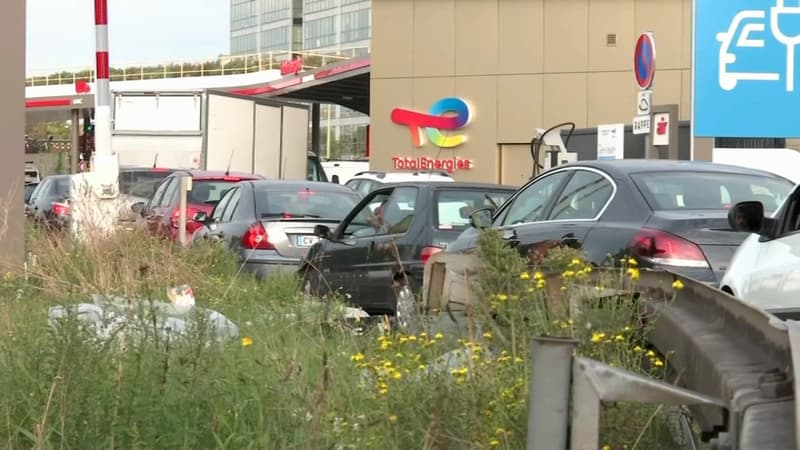For several days now, the relationship between the red dots and the yellow dots has been inverted on the map of service stations with fuel shortages established and updated by BFM Business. In fact, there are currently 1,524 service stations in total outage while 2,363 are in partial outage, that is, in at least one product. According to figures from the Ministries of Energy Transition and Ecological Transition and Territorial Cohesion, one site in five is affected at the national level.
However, the map reveals still pronounced disparities between the French regions. As since the beginning of social movements in refineries and fuel depots, the Atlantic coast remains relatively safe, especially the southwest. On Wednesday, only 7.7% of gas stations in New Aquitaine lacked at least one fuel, a percentage that fell to 6.4% in Brittany.
Situation still complex in Île-de-France or Auvergne-Rhône-Alpes
The two regions seem very empty compared to others whose borders are barely distinguishable. This is particularly the case in Bourgogne-Franche-Comté, where a third of service stations ran out of fuel on Wednesday. Ile-de-France and Auvergne-Rhône-Alpes also show a high density of service stations in difficulty with a proportion of around 30%. We also note Occitania where there are many places in total rupture due to the difficulty of rail transport that is only slightly offset by tanker deliveries.
On the other hand, we can clearly see the improvement of the situation in Hauts-de-France and in Grand-Est. For the first region, this improvement is due to the lifting of the strike at the Mardyck refinery, near Dunkirk, which allowed a large part of the gas stations in the sector to be refueled. As for the second, the level of the Rhine is now more practicable for the barges that transport fuel.
Source: BFM TV


